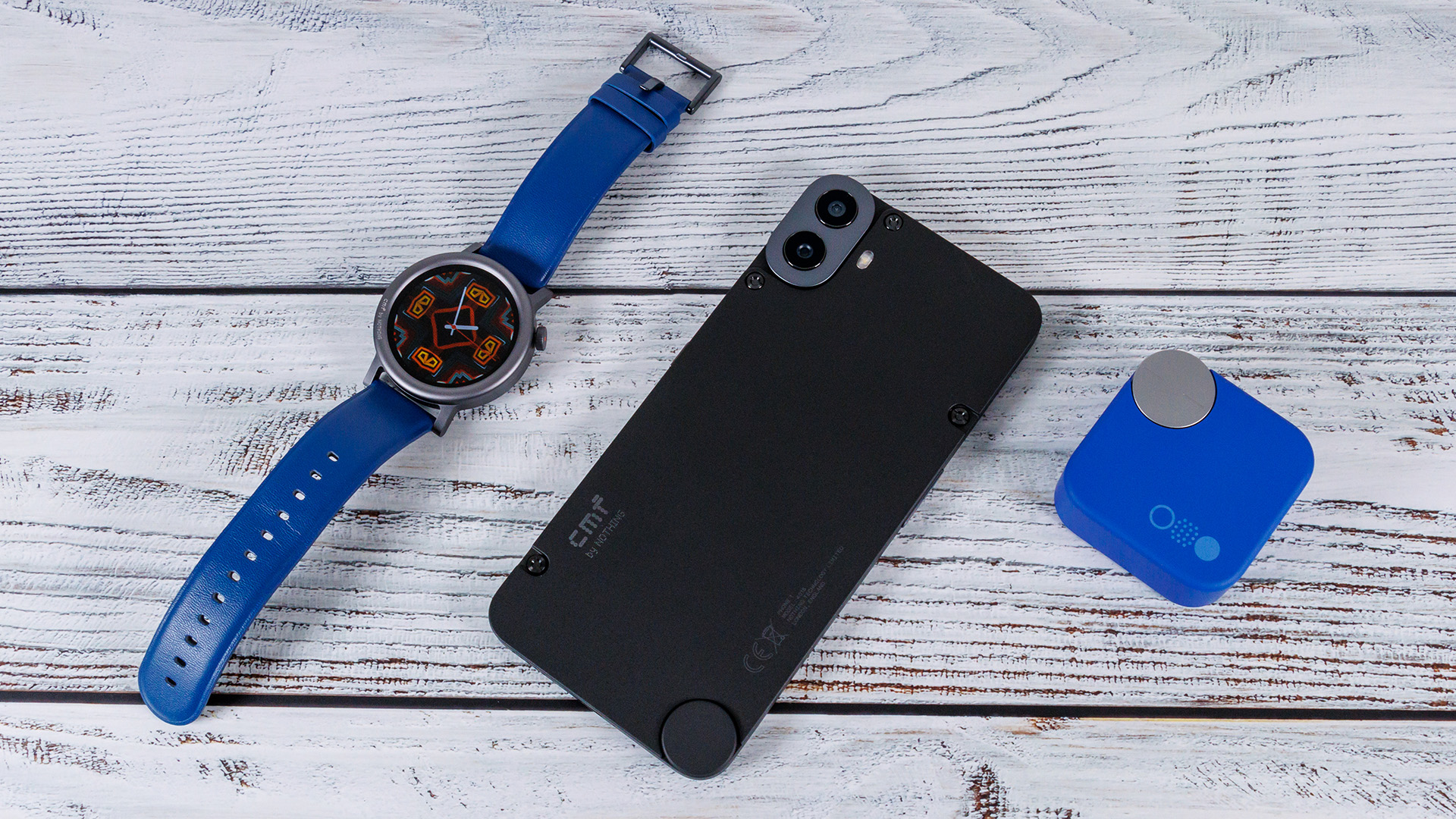
Análise do CMF Phone 1 - Smartphone modular a um preço acessível
O senhor é um especialista em personalização.
O CMF Phone 1 da Nothing se posiciona no segmento econômico de médio porte. Além de ter um hardware respeitável, o smartphone apresenta um design modular que permite maior personalização. Nesta análise, discutiremos onde o telefone se destaca e o que pode ser melhorado.Daniel Schmidt, 👁 Daniel Schmidt (traduzido por DeepL / Ninh Duy) Publicado 🇺🇸 🇩🇪 ...
Veredicto - Acessível e personalizável
O CMF Phone 1 é um smartphone de estreia impressionante para a submarca Nothing, destacando-se principalmente por seu design exclusivo. Embora os painéis traseiros substituíveis não sejam novidade, a empresa adicionou mais utilidade e opções com a tampa de rosca. O Accessory Point adicionado não apenas aprimora a funcionalidade, mas também chama a atenção.
O CMF Phone 1 oferece um sólido desempenho do sistema graças ao seu ágil SoC MediaTek. Apesar de não ser tão brilhante quanto prometido, a tela ainda atinge excelentes níveis de brilho.
Infelizmente, o dispositivo não tem suporte para NFC. Nada explica o fato de o smartphone CMF ter sido inicialmente planejado apenas para o mercado indiano. Essa deficiência provavelmente será resolvida com o lançamento do CMF Phone 2. Também gostaríamos que o dispositivo tivesse suporte a atualizações mais longas.
Apesar de ostentar a capacidade 5G, o CMF Phone 1 suporta apenas o antigo padrão Wi-Fi 5. As câmeras integradas são notavelmente boas para um telefone de baixo custo, mas ele não tem uma segunda câmera traseira para tirar fotos. Por outro lado, o CMF Phone 1 tem uma excelente duração da bateria.
Pro
Contra
Preço e disponibilidade
Na Alemanha, o CMF Phone 1 está atualmente disponível por apenas €179 em varejistas como a Amazon. Para os leitores dos EUA, o modelo de 256 GB pode ser adquirido por US$ 289 na Amazon. Como alternativa, os senhores podem consultar a página oficial do produto CMF Phone 1 para saber a disponibilidade em sua região.
Possíveis concorrentes em comparação
Imagem | Modelo / Análises | Geizhals | Peso | Unidade | Tela |
|---|---|---|---|---|---|
| CMF Phone 1 MediaTek Dimensity 7300 ⎘ ARM Mali-G615 MP2 ⎘ 8 GB Memória, 256 GB | 197 g | 256 GB UFS 3.1 Flash | 6.67" 2400x1080 395 PPI Super AMOLED | ||
| Oppo Reno12 Pro MediaTek Dimensity 7300 ⎘ ARM Mali-G615 MP2 ⎘ 12 GB Memória, 512 GB | 184 g | 512 GB UFS 3.1 Flash | 6.70" 2412x1080 394 PPI AMOLED | ||
| Xiaomi Redmi Note 13 Pro 5G Qualcomm Snapdragon 7s Gen 2 ⎘ Qualcomm Adreno 710 ⎘ 8 GB Memória, 256 GB UFS 2.1 | Listenpreis 399€ | 187 g | 256 GB UFS 2.2 Flash | 6.67" 2712x1220 446 PPI AMOLED | |
| Samsung Galaxy A35 5G Samsung Exynos 1380 ⎘ ARM Mali-G68 MP5 ⎘ 6 GB Memória, 128 GB UFS 2.1 | Listenpreis 379€ | 209 g | 128 GB UFS 2.2 Flash | 6.60" 2340x1080 390 PPI Super AMOLED |
Índice
- Veredicto - Acessível e personalizável
- Especificações
- Capa e recursos - Tampa traseira substituível com ponto para acessórios
- Conectividade e software - CMF Phone 1 com Wi-Fi AC e 5G
- Câmeras - O principal atirador do CMF Phone 1 é decente
- Tela - OLED brilhante com escurecimento PWM de 960 Hz
- Desempenho, emissões e duração da bateria
- Avaliação geral do Notebookcheck
Os Top 10
» Os Top 10 Portáteis Multimídia
» Os Top 10 Portáteis de Jogos
» Os Top 10 Portáteis Leves para Jogos
» Os Top 10 Portáteis Acessíveis de Escritório/Empresariais
» Os Top 10 Portáteis Premium de Escritório/Empresariais
» Os Top 10 dos Portáteis Workstation
» Os Top 10 Subportáteis
» Os Top 10 Ultrabooks
» Os Top 10 Conversíveis
» Os Top 10 Tablets
» Os Top 10 Smartphones
» A melhores Telas de Portáteis Analisadas Pela Notebookcheck
» Top 10 dos portáteis abaixo dos 500 Euros da Notebookcheck
» Top 10 dos Portáteis abaixo dos 300 Euros
O CMF Phone 1 é o primeiro smartphone lançado pela marca econômica da Nothing e foi originalmente planejado exclusivamente para o mercado indiano. No entanto, o conceito recebeu uma resposta tão positiva internacionalmente que a Nothing decidiu levar o dispositivo para outros países também.
Duas variantes do telefone estão disponíveis: 8/128 GB (€239, ou US$199) e 8/256 GB (€269, ou US$289). O armazenamento também pode ser expandido usando um cartão microSD opcional.
Especificações
Capa e recursos - Tampa traseira substituível com ponto para acessórios
O CMF Phone 1 apresenta um design modular com um painel traseiro substituível, fixado por quatro parafusos proeminentes em vez de clipes. A placa também tem o que a Nothing chama de Accessory Point, uma rosca para prender acessórios opcionais, como um cordão, um suporte dobrável ou um estojo para cartão (€ 25 ou US$ 25 cada). A tampa traseira vem em quatro cores: Preto, azul, laranja e verde claro. Cada capa adicional custa €35 (US$35) e inclui uma ferramenta correspondente, novos parafusos, uma bandeja para cartões e uma capa Accessory Point em uma cor correspondente. Infelizmente, a Nothing perdeu a oportunidade de também tornar a bateria facilmente removível, pois ela é fixada com adesivos adicionais, impedindo o acesso conveniente do usuário.
A placa traseira é feita de plástico e não é suscetível a coletar impressões digitais. As opções azul e laranja também vêm com acabamento em couro vegano. O CMF Phone 1 tem ótima qualidade de construção e é bem confortável na mão, considerando o preço. As aberturas na parte frontal são justas e uniformes. O dispositivo não range muito quando é torcido e parece muito resistente. Os botões físicos têm um pouco de folga, mas são extremamente fáceis de pressionar.
O telefone é equipado com um slot híbrido que pode conter dois Nano SIMs ou um microSD e um cartão SIM. No entanto, o slot não é o mais rápido de seu tipo. Além disso, não há NFC no aparelho.
| SD Card Reader - average JPG Copy Test (av. of 3 runs) | |
| Samsung Galaxy A35 5G (Angelbird AV Pro V60) | |
| Média da turma Smartphone (7.7 - 77, n=73, últimos 2 anos) | |
| CMF Phone 1 (Angelbird AV Pro V60) | |
| Oppo Reno12 Pro (Angelbird AV Pro V60) | |
Cross Platform Disk Test (CPDT)
Conectividade e software - CMF Phone 1 com Wi-Fi AC e 5G
Em um cenário ideal, o CMF Phone 1 pode se conectar a uma rede móvel 5G. Ele cobre uma faixa razoavelmente ampla de frequências e não deve ter problemas para estabelecer uma conexão móvel na Europa. Embora o dispositivo tenha mantido uma conexão estável com nosso roteador de referência Asus ROG Rapture GT-AXE11000 via Wi-Fi 5, as velocidades não foram especialmente impressionantes.
A qualidade de voz no smartphone CMF é decente. Em ambientes silenciosos, as vozes transmitidas soam bastante naturais, com apenas um leve eco no alto-falante. Entretanto, o cancelamento de ruído é bastante rudimentar.
O CMF Phone 1 vem com o Nothing OS 2.6 executado sobre o site Android 14, a mesma sobreposição encontrada no Nothing Phone (2a). A empresa promete duas atualizações principais e três anos de patches de segurança, o que ainda é satisfatório nessa faixa de preço.
A segurança biométrica é feita por um sensor óptico de impressão digital no visor, que pode desbloquear o CMF Phone 1 de forma bastante rápida e confiável. O senhor também tem a opção de usar o desbloqueio facial por meio da câmera frontal, mas esse método é menos seguro e só funciona corretamente em boas condições de iluminação.
Ao contrário de outros smartphones da empresa, a Nothing não forneceu nenhuma informação de sustentabilidade para o CMF Phone 1. A embalagem tem um design laminado, mas não usa nenhum tipo de plástico.
Câmeras - O principal atirador do CMF Phone 1 é decente
Apesar de não ter autofoco, a câmera frontal do CMF Phone 1 ainda pode tirar fotos respeitáveis, desde que haja luz suficiente.
O disparador principal na parte traseira oferece até 50 MP e usa binning de pixels. No entanto, ele também pode utilizar a resolução total e até capturar imagens RAW. As fotos tiradas à luz do dia ficam ótimas, caracterizadas por um nível agradável de nitidez e boa dinâmica. Há uma segunda lente traseira, mas ela é um sensor de profundidade para criar um efeito bokeh. O telefone não conta com nenhuma câmera ultrawide, com zoom óptico ou macro e também não tem estabilização de imagem.
A câmera principal pode capturar vídeos em 4K/30 fps ou 1080p/60 fps. Dito isso, a estabilização eletrônica de imagem só funciona em 1080p/30 fps. A câmera frontal oferece apenas resolução Full HD a 30 ou 60 fps.
Comparação de imagens
Escolha uma cena e navegue pela primeira imagem. Um clique muda a posição nas telas sensíveis ao toque. Um clique na imagem ampliada abre o original em uma nova janela. A primeira imagem mostra a fotografia em escala do dispositivo de teste.
Main cameraMain camera5x zoomLow-light

Tela - OLED brilhante com escurecimento PWM de 960 Hz
Ao exibir uma imagem totalmente branca com o sensor de luz ambiente ativado, a tela Super AMOLED do CMF Phone 1 atingiu um pico de brilho excepcionalmente alto de mais de 1.200 cd/m², embora esse valor seja significativamente menor do que os 2.000 cd/m² anunciados. O painel também manteve esse nível de brilho durante a medição APL18 e a reprodução de vídeo HDR. O pico de brilho declarado pela Nothing provavelmente só pode ser alcançado com fotos HDR.
O sistema pode ajustar a taxa de atualização da tela para 60 ou 120 Hz. Como alternativa, os usuários podem optar por fixá-la em 60 Hz. Ao contrário de muitos de seus rivais, o CMF Phone 1 emprega escurecimento PWM de alta frequência. Embora a frequência não seja alta o suficiente para eliminar totalmente os possíveis problemas de pessoas sensíveis, ela pode pelo menos atenuar esses problemas.
| |||||||||||||||||||||||||
iluminação: 97 %
iluminação com acumulador: 1169 cd/m²
Contraste: ∞:1 (Preto: 0 cd/m²)
ΔE Color 1.5 | 0.5-29.43 Ø4.87
ΔE Greyscale 1.9 | 0.5-98 Ø5.1
100% sRGB (Calman 2D)
Gamma: 2.22
| CMF Phone 1 Super AMOLED, 2400x1080, 6.7" | Oppo Reno12 Pro AMOLED, 2412x1080, 6.7" | Xiaomi Redmi Note 13 Pro 5G AMOLED, 2712x1220, 6.7" | Samsung Galaxy A35 5G Super AMOLED, 2340x1080, 6.6" | |
|---|---|---|---|---|
| Screen | -19% | -13% | -17% | |
| Brightness middle | 1169 | 1192 2% | 1205 3% | 904 -23% |
| Brightness | 1183 | 1209 2% | 1177 -1% | 912 -23% |
| Brightness Distribution | 97 | 92 -5% | 90 -7% | 97 0% |
| Black Level * | ||||
| Colorchecker dE 2000 * | 1.5 | 1.8 -20% | 1.51 -1% | 2.1 -40% |
| Colorchecker dE 2000 max. * | 2.9 | 4 -38% | 4.07 -40% | 2.8 3% |
| Greyscale dE 2000 * | 1.9 | 2.9 -53% | 2.5 -32% | 2.2 -16% |
| Gamma | 2.22 99% | 2.33 94% | 2.175 101% | 2.1 105% |
| CCT | 6733 97% | 6242 104% | 6407 101% | 6478 100% |
* ... menor é melhor
Cintilação da tela / PWM (modulação por largura de pulso)
| Tela tremeluzindo/PWM detectado | 120 Hz Amplitude: 14.67 % Secondary Frequency: 926 Hz | ||
A luz de fundo da tela pisca em 120 Hz (pior caso, por exemplo, utilizando PWM) . A frequência de 120 Hz é muito baixa, portanto a oscilação pode causar fadiga ocular e dores de cabeça após uso prolongado. [pwm_comparison] Em comparação: 53 % de todos os dispositivos testados não usam PWM para escurecer a tela. Se PWM foi detectado, uma média de 8516 (mínimo: 5 - máximo: 343500) Hz foi medida. | |||
Exibir tempos de resposta
| ↔ Tempo de resposta preto para branco | ||
|---|---|---|
| 1.03 ms ... ascensão ↗ e queda ↘ combinadas | ↗ 0.512 ms ascensão | |
| ↘ 0.5175 ms queda | ||
| A tela mostra taxas de resposta muito rápidas em nossos testes e deve ser muito adequada para jogos em ritmo acelerado. Em comparação, todos os dispositivos testados variam de 0.1 (mínimo) a 240 (máximo) ms. » 3 % de todos os dispositivos são melhores. Isso significa que o tempo de resposta medido é melhor que a média de todos os dispositivos testados (20.8 ms). | ||
| ↔ Tempo de resposta 50% cinza a 80% cinza | ||
| 1.42 ms ... ascensão ↗ e queda ↘ combinadas | ↗ 0.7095 ms ascensão | |
| ↘ 0.7145 ms queda | ||
| A tela mostra taxas de resposta muito rápidas em nossos testes e deve ser muito adequada para jogos em ritmo acelerado. Em comparação, todos os dispositivos testados variam de 0.165 (mínimo) a 636 (máximo) ms. » 5 % de todos os dispositivos são melhores. Isso significa que o tempo de resposta medido é melhor que a média de todos os dispositivos testados (32.5 ms). | ||
Desempenho, emissões e duração da bateria
O CMF Phone 1 é alimentado por um MediaTek Dimensity 7300 acoplado a 8 GB de memória. Esse processador permite um desempenho suave do sistema, enquanto o processador integrado ARM Mali-G615 MP2 Integrada permite jogos sem interrupções na maioria dos casos, embora sem traçado de raios ou altas taxas de quadros.
Durante nossos testes, as temperaturas da superfície do telefone permaneceram inaceitáveis durante todo o tempo; o SoC não se acelerou nem mesmo sob carga prolongada. O alto-falante mono na parte inferior do queixo oferece um perfil de som agradável que é notavelmente bom para o preço.
Com a tela configurada para 120 Hz e 150 cd/m², a bateria de 5.000 mAh atingiu impressionantes 18 horas de uso durante nosso teste de Wi-Fi. A bateria pode ser carregada com até 33 watts.
| CrossMark - Overall | |
| Média da turma Smartphone (187 - 2674, n=164, últimos 2 anos) | |
| CMF Phone 1 | |
| Média MediaTek Dimensity 7300 (390 - 759, n=5) | |
| Samsung Galaxy A35 5G | |
| Oppo Reno12 Pro | |
| Geekbench AI | |
| Single Precision TensorFlow NNAPI 1.1 | |
| Média da turma Smartphone (122 - 4619, n=45, últimos 2 anos) | |
| CMF Phone 1 | |
| Média MediaTek Dimensity 7300 (521 - 540, n=3) | |
| Oppo Reno12 Pro | |
| Half Precision TensorFlow NNAPI 1.1 | |
| Média da turma Smartphone (122 - 32432, n=45, últimos 2 anos) | |
| CMF Phone 1 | |
| Média MediaTek Dimensity 7300 (1051 - 1322, n=3) | |
| Oppo Reno12 Pro | |
| Quantized TensorFlow NNAPI 1.1 | |
| Média da turma Smartphone (118 - 44657, n=45, últimos 2 anos) | |
| Oppo Reno12 Pro | |
| Média MediaTek Dimensity 7300 (2697 - 2721, n=3) | |
| CMF Phone 1 | |
GFXBench: on screen Aztec Ruins High Tier Onscreen | 2560x1440 Aztec Ruins High Tier Offscreen | on screen Aztec Ruins Normal Tier Onscreen | 1920x1080 Aztec Ruins Normal Tier Offscreen | 3840x2160 4K Aztec Ruins High Tier Offscreen
| 3DMark / Wild Life Extreme Unlimited | |
| CMF Phone 1 | |
| Oppo Reno12 Pro | |
| Samsung Galaxy A35 5G | |
| Xiaomi Redmi Note 13 Pro 5G | |
| 3DMark / Wild Life Extreme | |
| CMF Phone 1 | |
| Oppo Reno12 Pro | |
| Samsung Galaxy A35 5G | |
| Xiaomi Redmi Note 13 Pro 5G | |
| 3DMark / Wild Life Unlimited Score | |
| Oppo Reno12 Pro | |
| CMF Phone 1 | |
| Xiaomi Redmi Note 13 Pro 5G | |
| Samsung Galaxy A35 5G | |
| 3DMark / Wild Life Score | |
| CMF Phone 1 | |
| Oppo Reno12 Pro | |
| Xiaomi Redmi Note 13 Pro 5G | |
| Samsung Galaxy A35 5G | |
| 3DMark / Steel Nomad Light Unlimited Score | |
| Oppo Reno12 Pro | |
| CMF Phone 1 | |
| 3DMark / Steel Nomad Light Score | |
| Oppo Reno12 Pro | |
| CMF Phone 1 | |
| GFXBench / Aztec Ruins High Tier Onscreen | |
| Oppo Reno12 Pro | |
| CMF Phone 1 | |
| Samsung Galaxy A35 5G | |
| Xiaomi Redmi Note 13 Pro 5G | |
| GFXBench / Aztec Ruins High Tier Offscreen | |
| Oppo Reno12 Pro | |
| CMF Phone 1 | |
| Xiaomi Redmi Note 13 Pro 5G | |
| Samsung Galaxy A35 5G | |
| GFXBench / Aztec Ruins Normal Tier Onscreen | |
| Oppo Reno12 Pro | |
| CMF Phone 1 | |
| Samsung Galaxy A35 5G | |
| Xiaomi Redmi Note 13 Pro 5G | |
| GFXBench / Aztec Ruins Normal Tier Offscreen | |
| Oppo Reno12 Pro | |
| CMF Phone 1 | |
| Xiaomi Redmi Note 13 Pro 5G | |
| Samsung Galaxy A35 5G | |
| GFXBench / 4K Aztec Ruins High Tier Offscreen | |
| Oppo Reno12 Pro | |
| CMF Phone 1 | |
| Xiaomi Redmi Note 13 Pro 5G | |
| Samsung Galaxy A35 5G | |
| CMF Phone 1 | Oppo Reno12 Pro | Xiaomi Redmi Note 13 Pro 5G | Samsung Galaxy A35 5G | Média 256 GB UFS 3.1 Flash | Média da turma Smartphone | |
|---|---|---|---|---|---|---|
| AndroBench 3-5 | 59% | -5% | -50% | 41% | 71% | |
| Sequential Read 256KB | 1024.12 | 1777.39 74% | 946.8 -8% | 529.32 -48% | 1737 ? 70% | 2030 ? 98% |
| Sequential Write 256KB | 535.66 | 1700.51 217% | 808.2 51% | 270 -50% | 1164 ? 117% | 1646 ? 207% |
| Random Read 4KB | 294.28 | 228.05 -23% | 239.2 -19% | 244.24 -17% | 286 ? -3% | 282 ? -4% |
| Random Write 4KB | 394.59 | 265.4 -33% | 220.5 -44% | 62.59 -84% | 319 ? -19% | 325 ? -18% |
(±) A temperatura máxima no lado superior é 42.8 °C / 109 F, em comparação com a média de 35.1 °C / 95 F , variando de 21.9 a 63.7 °C para a classe Smartphone.
(±) A parte inferior aquece até um máximo de 41.8 °C / 107 F, em comparação com a média de 33.9 °C / 93 F
(+) Em uso inativo, a temperatura média para o lado superior é 28.2 °C / 83 F, em comparação com a média do dispositivo de 32.8 °C / ### class_avg_f### F.
3DMark Steel Nomad stress test
| 3DMark | |
| Wild Life Stress Test Stability | |
| Xiaomi Redmi Note 13 Pro 5G | |
| CMF Phone 1 | |
| Samsung Galaxy A35 5G | |
| Oppo Reno12 Pro | |
| Wild Life Extreme Stress Test | |
| Xiaomi Redmi Note 13 Pro 5G | |
| Samsung Galaxy A35 5G | |
| CMF Phone 1 | |
| Oppo Reno12 Pro | |
| Steel Nomad Light Stress Test Stability | |
| CMF Phone 1 | |
| Oppo Reno12 Pro | |
CMF Phone 1 análise de áudio
(+) | os alto-falantes podem tocar relativamente alto (###valor### dB)
Graves 100 - 315Hz
(-) | quase nenhum baixo - em média 27.6% menor que a mediana
(+) | o baixo é linear (6% delta para a frequência anterior)
Médios 400 - 2.000 Hz
(+) | médios equilibrados - apenas 4.6% longe da mediana
(+) | médios são lineares (6.8% delta para frequência anterior)
Altos 2 - 16 kHz
(+) | agudos equilibrados - apenas 2.5% longe da mediana
(+) | os máximos são lineares (3.4% delta da frequência anterior)
Geral 100 - 16.000 Hz
(±) | a linearidade do som geral é média (16.7% diferença em relação à mediana)
Comparado com a mesma classe
» 7% de todos os dispositivos testados nesta classe foram melhores, 6% semelhantes, 88% piores
» O melhor teve um delta de 12%, a média foi 36%, o pior foi 134%
Comparado com todos os dispositivos testados
» 26% de todos os dispositivos testados foram melhores, 7% semelhantes, 67% piores
» O melhor teve um delta de 4%, a média foi 24%, o pior foi 134%
Samsung Galaxy A35 5G análise de áudio
(+) | os alto-falantes podem tocar relativamente alto (###valor### dB)
Graves 100 - 315Hz
(-) | quase nenhum baixo - em média 23.6% menor que a mediana
(+) | o baixo é linear (6.3% delta para a frequência anterior)
Médios 400 - 2.000 Hz
(±) | médios reduzidos - em média 7.9% menor que a mediana
(+) | médios são lineares (6.3% delta para frequência anterior)
Altos 2 - 16 kHz
(+) | agudos equilibrados - apenas 4.5% longe da mediana
(+) | os máximos são lineares (2.6% delta da frequência anterior)
Geral 100 - 16.000 Hz
(±) | a linearidade do som geral é média (18% diferença em relação à mediana)
Comparado com a mesma classe
» 14% de todos os dispositivos testados nesta classe foram melhores, 8% semelhantes, 78% piores
» O melhor teve um delta de 12%, a média foi 36%, o pior foi 134%
Comparado com todos os dispositivos testados
» 35% de todos os dispositivos testados foram melhores, 8% semelhantes, 57% piores
» O melhor teve um delta de 4%, a média foi 24%, o pior foi 134%
| Duração da bateria - WiFi v1.3 | |
| CMF Phone 1 | |
| Oppo Reno12 Pro | |
| Xiaomi Redmi Note 13 Pro 5G | |
| Samsung Galaxy A35 5G | |
Avaliação geral do Notebookcheck
Além de oferecer uma excelente relação custo-benefício, o CMF Phone 1 se destaca principalmente por suas opções exclusivas de personalização.
CMF Phone 1
- 11/11/2024 v8
Daniel Schmidt
Transparência
A seleção dos dispositivos a serem analisados é feita pela nossa equipe editorial. A amostra de teste foi fornecida gratuitamente ao autor pelo fabricante para fins de revisão. Não houve influência de terceiros nesta revisão, nem o fabricante recebeu uma cópia desta revisão antes da publicação. Não houve obrigação de publicar esta revisão. Nunca aceitamos compensação ou pagamento em troca de nossas avaliações. Como empresa de mídia independente, a Notebookcheck não está sujeita à autoridade de fabricantes, varejistas ou editores.
É assim que o Notebookcheck está testando
Todos os anos, o Notebookcheck analisa de forma independente centenas de laptops e smartphones usando procedimentos padronizados para garantir que todos os resultados sejam comparáveis. Desenvolvemos continuamente nossos métodos de teste há cerca de 20 anos e definimos padrões da indústria no processo. Em nossos laboratórios de teste, equipamentos de medição de alta qualidade são utilizados por técnicos e editores experientes. Esses testes envolvem um processo de validação em vários estágios. Nosso complexo sistema de classificação é baseado em centenas de medições e benchmarks bem fundamentados, o que mantém a objetividade.







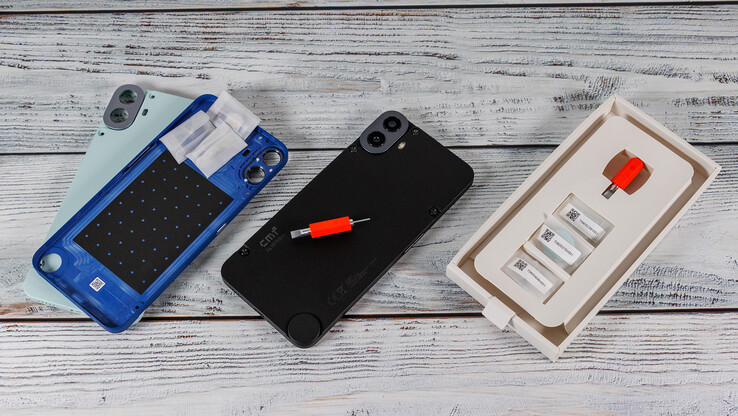














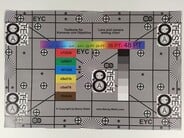

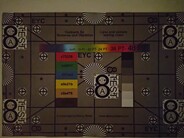

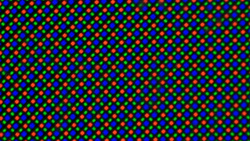
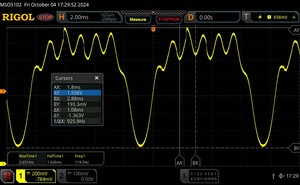








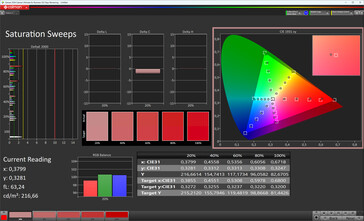
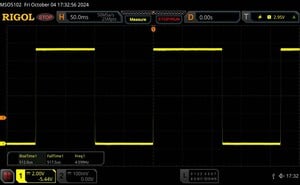


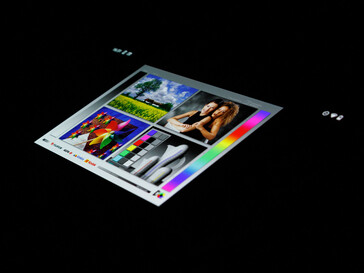
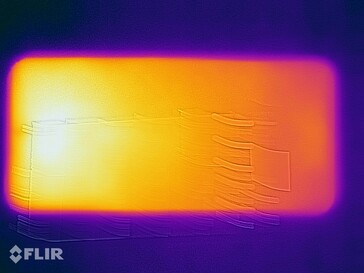
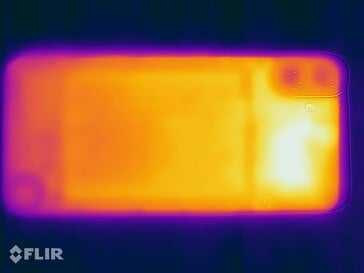
 Total Sustainability Score:
Total Sustainability Score: 








